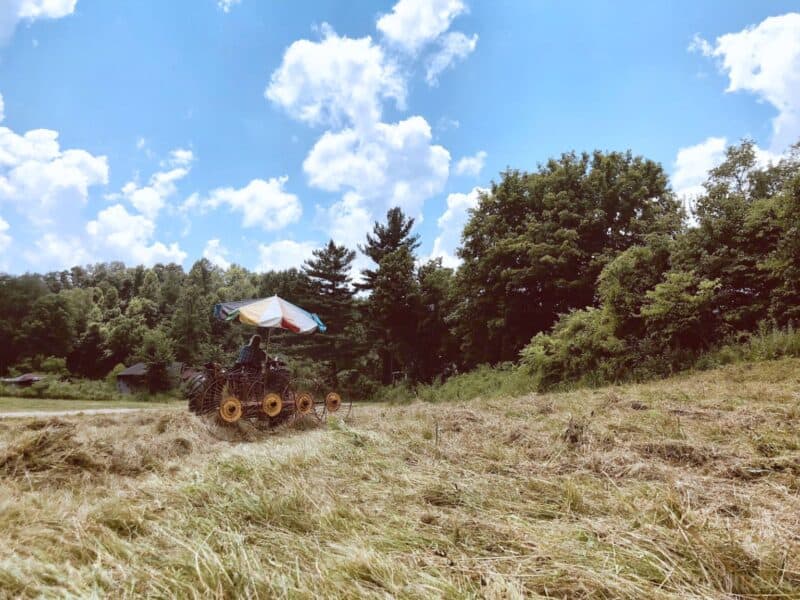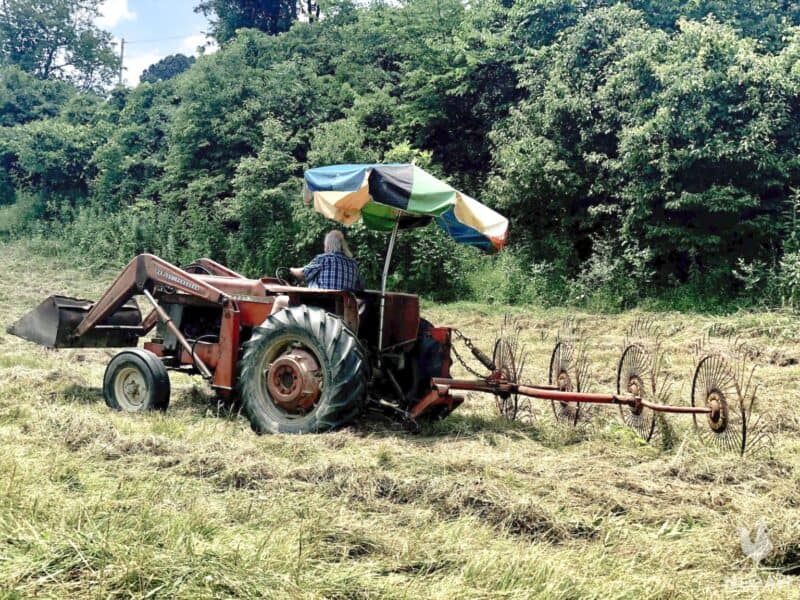Growing hay is just like growing any other kind of crop. Conditions have to be just right if you want a good harvest, and whether you’re going with grass or legumes, you’ve got to give it the right nutrition. This is where fertilizers come in.

But compared with other kinds of crops, recommendations for fertilizing an acre of hay seem to be all over the place. It’s enough to make you a little nervous! So, just how much fertilizer per acre of hay should you be using?
Expect to use between 20 and 40 pounds of fertilizer per acre of hay you are growing. The amount and the formulation should only be chosen and administered after careful soil testing.
In my opinion, lots of folks overthink fertilizing hay. There’s nothing magical or tricky about it, but people go wrong when they try to do the job based on gut intuition, a feeling, or other nonsensical metrics.
You’ve got to test the soil to know what your hay needs, purchase or mix your fertilizer accordingly, and then apply it in the correct ratio. That’s all there is to it! Keep reading and I’ll walk you through it…
What Nutrients Does Hay Need to Grow Healthy?
Hay needs the same nutrients that all other plant life needs in order to grow and thrive: nitrogen, phosphorus, potassium, and various other trace elements.
Nitrogen, as ever, is needed for the formation and growth of foliage, while phosphorus promotes all sorts of cellular processes and helps plants make use of nitrogen. Potassium facilitates the movement of moisture and other biological processes.
All are necessary, to one degree or another, depending on the levels already present in the soil, but of the three, nitrogen is the most important for the growth of your grass or legumes.
However, this doesn’t mean you should go crazy with the nitrogen, either! There’s definitely a case of too much of a good thing when it comes to fertilization, especially with nitrogen.
Excess nitrogen can result in toxicity for your crop and even taint your soil, making it tough to grow anything until you correct it!

You’ll Need to Fertilize Based on Anticipated Yield
One factor that many beginning homesteaders overlook when it comes to fertilization is that the baseline level of fertilizer applied should be done according to the anticipated yield of your acreage.
Said another way, apply fertilizer based on how much hay you expect to harvest, and this can be difficult to figure out if you haven’t harvested a given crop before or planted on that parcel of land.
A general rule of thumb is to expect to use between 20 and 30 pounds per ton of dry matter you anticipate. On the high side, two tons of hay per acre will need around 60 pounds, and three tons of hay will need around 90 pounds.
An average acre will yield anywhere from ¾ of a ton to 1 ½ tons, hence the recommendation for between 20 and 40 pounds of fertilizer above.
Of course, depending on the variety, this might be a truly exceptional yield, and of course, then you would not need that much fertilizer.
Understanding Fertilizer Formulas
The next point of mystery for beginning homesteaders is figuring out what those numbers mean on any given kind of fertilizer. These are typically expressed as a series of three numbers separated by hyphens, for instance, 15-15-15.
Simply enough, this refers to the elemental content of the fertilizer expressed as a percentage of nitrogen, phosphorus, and potassium, or NPK.
Knowing this, and referring to your test results, you’ll understand the lingo when talking to a dealer about exactly what you need. If you need more N or less K, you’ll know that refers to nitrogen or potassium, respectively. Remember, K refers to potassium because that is the elemental symbol for it on the periodic table.
Using our example of 15-15-15 above, you’ll know that the fertilizer has 15% nitrogen, 15% phosphorus, and 15% potassium.
What are Common Fertilizer Formulas for Hay?
There is no quick and easy fertilizer recommendation I can make for your acre of hay because your acreage will require a completely unique solution based on your soil requirements.
That being said, plenty of anecdotal evidence is indeed evidence, and I constantly see balanced formulas in use for growing hay: 19-19-19, 12-12-12, 5-10-10, and 10-10-10 are all popular.
The Type of Hay You Grow Makes a Difference, Too!
You’ll want to research the nutritional requirements of your grass or legumes as well. Some will need more of one or two elements and less of others, while some varieties, particularly legumes, can actually help keep nitrogen in the soil, meaning you won’t need to add as much during supplemental feedings or after harvest.
Understanding these nuances and peculiarities will help you avoid making mistakes and save money.
Understand the Growth Habits to Avoid Mistakes
Another thing concerning the type of grass or legumes you’re growing to make hay: you want to understand exactly what you can expect concerning the growth of those plants.
I’ve known more than a few homesteaders who, seeing that their grass wasn’t coming along, decided unilaterally that it didn’t have enough nutrients and fertilized again, only to recoil in horror when they absolutely fried it down to the roots.
Turns out that lots of grasses, and some legumes, start growing, slow down, and then take off later even under ideal conditions. Lots of your cool season grasses like orchardgrass, bluegrass and fescue are notorious for this.
If you know what to expect, you won’t overreact when it comes to fertilization, and as I said above, when you make a mistake and apply too much fertilizer, it’s very, very difficult to undo.
Tom has lived and worked on farms and homesteads from the Carolinas to Kentucky and beyond. He is passionate about helping people prepare for tough times by embracing lifestyles of self-sufficiency.
